Ours is a nation of eaters.
Americans have always been willing to embrace the new and the different on their plates. True, that occasionally leads to a Manifest Destiny of the waistline, but it also means we're insatiably curious — and fiercely proud — about food.
Last year, we chose , and had so much fun we decided to repeat the experiment.
After sidestepping certain hot-button issues (barbecue, pizza) we aimed for items that have a real American history, even if their roots lie elsewhere. Many readers sent in terrific recommendations last year — and more than a few complaints that we'd omitted something obvious (cheesesteaks) in favor of something obscure (Olympia oysters). Several of your well-argued picks were included in this year's list.
Here are 10 more foods that make America a truly delicious place to live.
Lobster roll
You'd immediately target Maine as the source of this down-home delicacy, but truth is hardly that simple. Long Island gets a certain amount of credit. John Mariani's “Encyclopedia of American Food And Drink” traces it to 1966-67, when the owner of the Lobster Roll Restaurant in Amagansett, N.Y., “produced a recipe containing mayonnaise, celery, and seasonings ... ”
Connecticut lays an earlier claim, though (Mariani traces it to a Milford restaurant in the 1920s), and Massachusetts gets more than a few nods. Roadfooders Jane and Michael Stern have uncovered fine specimens throughout the Northeast.
If its origins are hazy, the concept couldn't be more crystal clear. Succulent, sweet lobster meat, mixed with mayo and tucked into a crisp hot-dog bun; it is at once elegant and down-home, a quiet reminder that even luxury ingredients have humble roots.
New York City, in particular, is currently witnessing a lobster-roll renaissance at venues like Pearl Oyster Bar and Ditch Plains in the West Village. Whether it's reasonable to pay north of $22 for crustacean meat jammed into a bun is a personal choice, but the fact that people gladly will in a city where more refined options are in no short supply is testament to the fact that sometimes there's no need to gussy up simple pleasures just for the sake of being fancy.
Maple syrupThis sticky treat has a centuries-old pedigree. As one maple producers group notes: “Maple sugaring was not new to Massachusetts when the Pilgrims landed at Plymouth Rock in 1620.”
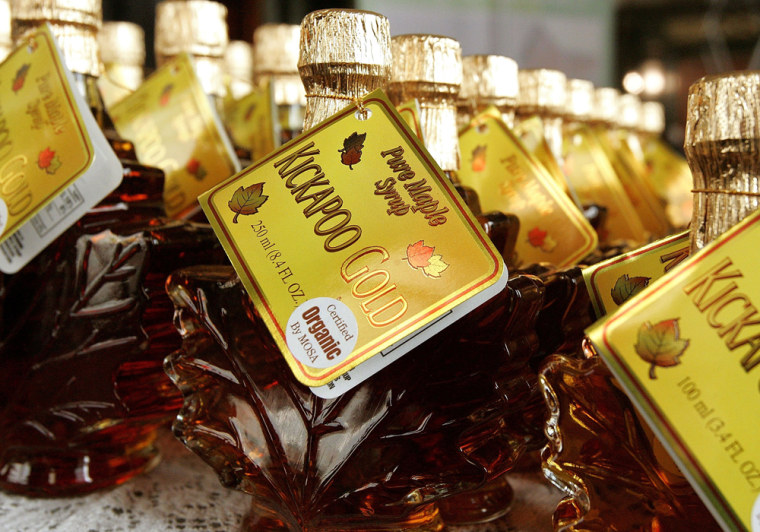
Native tribes were recorded tapping trees for sap in the first years of the 17th century, and turning the clear, sweet liquid into solid maple sugar. The Iroquois of the Northeast, and the Ojibwe and Ottawas of the Great Lakes, all have their own maple legends.
Though European maples produce little sap, North American varieties create it in abundance and New England settlers were quick to copy the technique, especially as a substitute for costly imported sugar. Sky-high tariffs from the 1764 Sugar Act provided even more incentive. That price advantage for maple remained through much of the 19th century, even as cane sugar became more affordable. But the maple industry in New England (and across the border in Canada) eventually turned its attention to the liquid stuff.
Since the creation in 1888 of Log Cabin Syrup (which mixed maple and cane syrups), it has been crucial to differentiate the real deal from lesser “pancake syrups,” and USDA regulations now mandate that only syrup made “exclusively by the evaporation of pure maple sap” can be called maple syrup, with the end product graded for quality.
If maple syrup is no longer cheap, it is still a food filled with tradition. It's not uncommon to see New Englanders trudge through the woods on a February or March morning, ready to boil down sap and, if Mother Nature cooperates, eat fresh syrup off freshly fallen snow. For all the improvements, the sugaring technique is remarkably similar to the way it was before America's colonial roots were ever in place.
Philly cheesesteakA true iconic food can often be identified when rivals demand credit for its invention. (No one's scrambling to attach their name to chipped beef on toast, are they?) One such endless fight simmers on at the corner of S. 9th St. and E. Passyunk Ave. in South Philadelphia, where the proprietors of Pat's King of Steaks and Geno's Steaks continue their endless skirmishes.
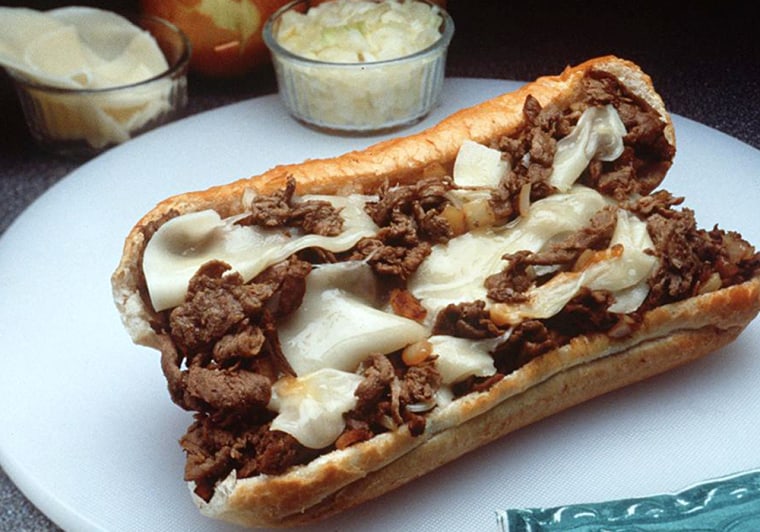
The timeline is relatively clear-cut. In 1930, Pat Oliveri is said to have tossed sliced beef onto the grill and offered it on an Italian roll. Geno's didn't come until much later — the location opened in 1966 — but founder Joe Vento insists he was the one to add cheese to the meat, making the sandwich worthy of fame.
No surprise that the cheese claim, like most everything else, is in dispute; Pat's insists on credit for the eventual choice of Cheez Whiz as a key element. There are plenty of other cheesesteak joints in Philly, but this now-legendary rivalry is so fierce that if his competitor was shuttered, Pat Oliveri's nephew Frank told Fortune, “I'd buy the place and open it up again. And call it Geno's. And fight with myself.”
What's beyond dispute, though, is just how essential the cheesesteak has become as a symbol of the City of Brotherly Love. Its calories-be-damned gooeyness, and the infamously rigid counter lingo (with? without? C'mon, already!), only add to the legend. The famous aren't allowed to leave Philadelphia, it seems, without a cheesesteak pit stop.
Yes, they're gut-bustingly good, but here's the thing: Without the attitude, the cheesesteak would be a minor fad. Vento recently when he posted a sign saying, “This is America. When ordering, speak English.” Time for apologies? Not hardly. It's Philly, after all. Maybe you can get away with asking for provolone, but courtesy costs 50 cents extra.
Gumbo
It all starts with okra.
Sure, there are versions of gumbo that manage without the gummy green pods, but the very word “gumbo” hails from the Bantu word kigombo and its linguistic cousins. Roux has an essential place, but okra is what gives gumbo its history. (And let us not talk here of filé.)
You might argue that gumbo is more process than foodstuff, a pathway to flavor far more significant than any one recipe. Is it a matter of including andouille? Are shrimp essential? Perhaps the sheer brilliance of gumbo is that it has never required uniformity.
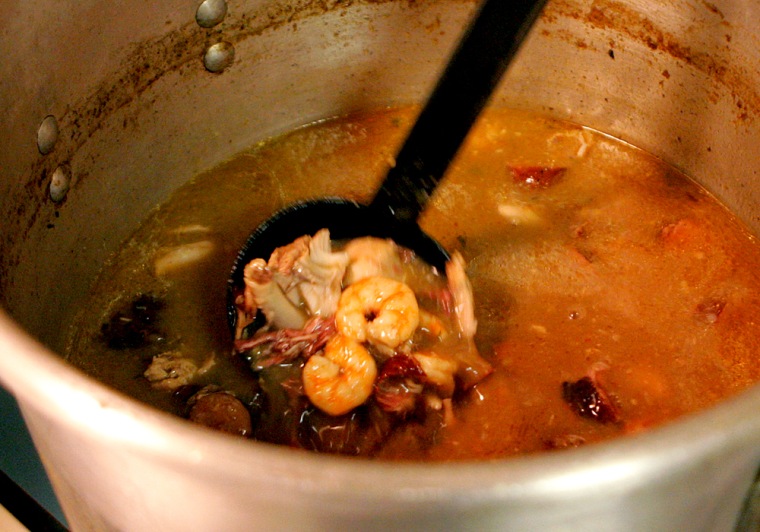
Even in New Orleans, hungry eaters can detect major shifts in density and spice from block to block. Various styles have their fans, but never forget: When you tuck into a bowl, you keep a crucial tradition alive.
It has never been more important to appreciate the value of Louisiana cooking, and though it's impossible — almost demeaning — to pick just one symbol for this list, gumbo's case is strong indeed.
At post-Katrina benefits across the nation, gumbo has more often than not been the featured centerpiece, and as New Orleans grows itself back to health, gumbo will help tie together memory, loss and hope.
Shrimp and gritsThere is no artifice in shrimp and grits, the simplest of simple dishes and yet inseparably tied to the heart of Low Country cooking. At times it's merely known as “breakfast shrimp,” a sign of its original purpose.
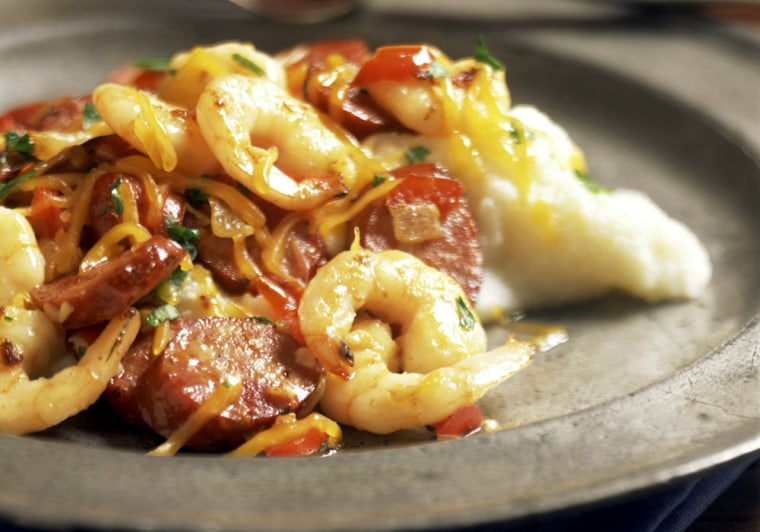
The idea couldn't be more straightforward: shrimp, briefly sauteed, atop a pile of freshly cooked grits. (Which is to say: not instant, not if you can avoid it.) Other tidbits can find their way in: mushroom or peppers or even tomatoes. But really, this is about good grits — a foodstuff that's deceptively easy to cook and deceptively hard to cook well. Nailing that creamy-but-not-mushy texture is a bit of Southern wizardry.
Several chefs have staked reputations on their interpretations, perhaps none more so than Bill Neal, whose Chapel Hill, N.C., restaurant Crook's Corner was all but defined by his popular shrimp and grits. The dish has earned enough fame to warrant an entire cookbook on the topic by food writer Nathalie Dupree.
But if fancy versions can be found on the tables of Charleston and Savannah, and even farther afield, it's ultimately still food that hearkens back to coastal kitchens, where fishing families would eat what was available. Any dish that can be both fancy and down-home is worthy of love.
Frito pie
Frito pie falls squarely in the realm of trash food, which isn't to say it doesn't have wondrous charms. Tear open a bag of Fritos, dump on a pile of chili and a sprinkling of cheese, and tuck in, quick. No plates, please. Brilliant.
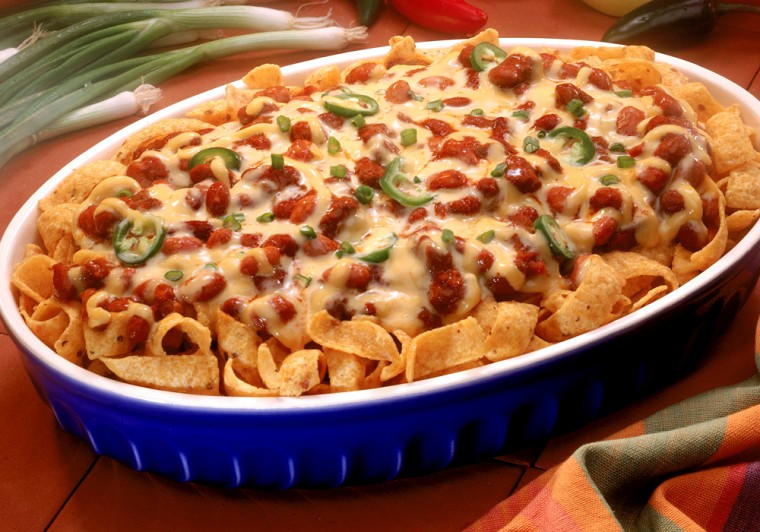
At least two creation myths exist for this humble delicacy, and good luck resolving them.
The more official of the two is rooted in Texas. Dallas-based Frito-Lay has at times attributed the invention to Daisy Dean Doolin, mother of founder Elmer Doolin. Elmer Doolin founded the company in 1932, his mom cooked the first Fritos chips in her kitchen and the official tale dates Frito pie back nearly that far. Certainly, the pie (which is really anything but a pie) has been satisfying Texas football spectators for decades.
Legend No. 2 is based farther west, in Santa Fe, N.M., where Teresa Hernandez, a worker at a Woolworth's lunch counter, is said to have concocted it in the '60s. Such is the power of this tale that the same downtown counter — the Woolworth's long gone — still serves it up.
What's the secret behind the pie? In 1986, writer Michael Hilton posited one theory in Texas Monthly that “the Frito retains its crispness even when chock-full of grease. Try chili on top of potato chips, if you don't believe me. In fact, try chili with Doritos or Tostitos or any one of the other, dry corn chips. It won't do. The Frito has integrity.”
As does Frito pie. Almost crazily simple, yet capable of inducing a lifetime worth of cravings, it's the perfect example of how the delicious whole can be greater than the sum of its greasy parts.
Wisconsin brats
Note to Sheboygan (the “Bratwurst Capital of the World”): Let's give credit where credit is due and accept that bratwurst are not a food native to these shores. Many generations of German butchers would back me up here, honest.
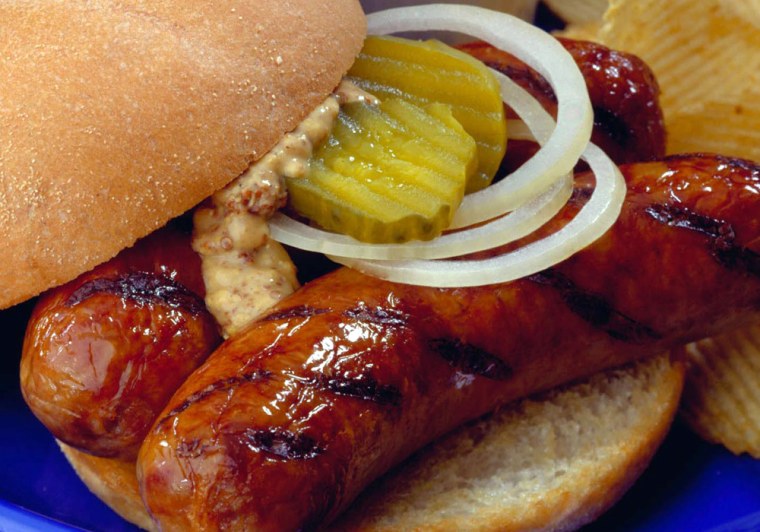
But as an adoptive food, Wisconsinites should proudly proclaim the glory of the brat. In a modern hot-dog-chomping world, it's hard at times to appreciate the beauty of a perfectly made sausage with just a dab of mustard to keep it company. Yet Wisconsin generally, and Sheboygan specifically, keep the tradition proudly alive — be it simmered or grilled.
There are standards to be kept. Mustard should be more brown than yellow, as the Germans would have it. Brats go on rolls, not on buns. Despite the term “brat fry” (and there is an entire brat lingo to be learned) frying is not in fact an acceptable cooking method. Beyond that, matters of dressing (ketchup?) and simmering substance (beer? water?) are debatable. In a serious manner, of course. On the shores of Lake Michigan, such things are not taken lightly.
What can't be debated is Wisconsin's brat love. In a state where the Sausage Race is a regular sixth-inning feature at Brewers games, nothing comes between the people and their pork. Or pork-and-beef, if you prefer.
Hawaiian plate lunchYou have not known the wonders of starch until you've had a Hawaiian plate lunch.
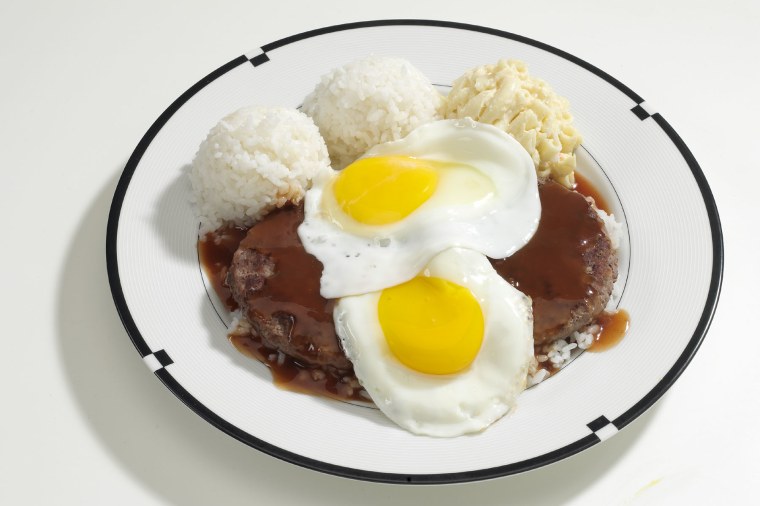
A plate lunch's entrée, such as it is, can be almost anything: fish, lau lau (pork and fish wrapped in taro leaves), teriyaki, even — in the true Hawaiian spirit — Spam. The constants are the sides — two scoops of rice and a scoop of macaroni salad. Travel as far afield as New York, where plate-lunch joints have finally made an appearance, and the two-and-one formula remains true.
Its origins remain clouded, though by one telling the mix of generally Asian foods that make up the typical plate-lunch menu might hearken back to the islands' earlier days from the multicultural lunch breaks in the fields at cane plantations. Certainly the starchy composition would resonate with people who had more appetite than money, and needed energy for a long day's work.
Plate-lunch restaurants and stands haven't been refined much through the years. It's unrepentently street food, though a plate lunch's simple composition is surely a major factor in it having become a cherished tradition. Ask a Hawaiian on the mainland what they miss, and this is likely to top the list. How fortunate the rest of us are that they're willing to share.
Banana splitThe birthplace of this chilly, indulgent treat is hotly contested.
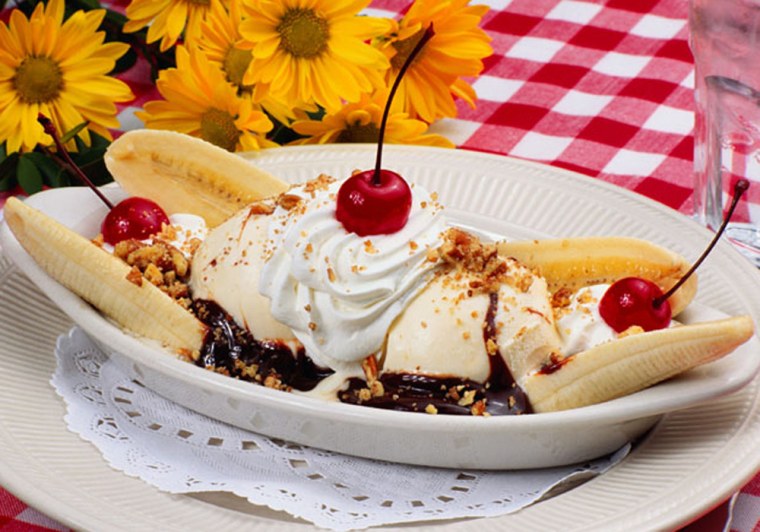
On the one hand, you have Latrobe, Pa., which holds up its Tassell Pharmacy as Banana Split Ground Zero, where apprentice David Strickler first whipped one up in 1904. When TV producers sought out the split's source, they headed for Pennsylvania.
On the other hand is Wilmington, Ohio, home to the annual Banana Split Festival, which alleges that restaurant owner E.R. Hazard first concocted the divine dessert in 1907. The details seem to favor Latrobe, but as one Ohio tourism official told the Pittsburgh Tribune-Review in 2004, “"We're going to stick with our claim.”
Let's step away from controversy for a sec and simply admire the net result: Every element of an ice-cream sundae is assembled, then cautiously positioned atop two banana halves and taken from great to extraordinary. Michael Turback, author of “The Banana Split Book,” has said the dessert “reflects our genius for invention, passion for indulgence and reputation for wackiness.”
At 102 (or 99, if you're a Wilmington partisan), the banana split is the perfect exhibit of America's sweet tooth. It is an instance of taking what's great and then going beyond the cause. True, Latrobe has ample evidence to back up its claim, but perhaps this spat should be allowed to sit in the deep freeze. Both towns love their sundaes. Why not let them split the difference?
Mission burritoBurritos in San Francisco's Mission district are all about big. These are not by-the-book burritos; the typical specimen is at least a pound heavier than regulation size. Its roots may have a Mexican accent, but the exuberant size, and over-the-top concept, is undeniably American.
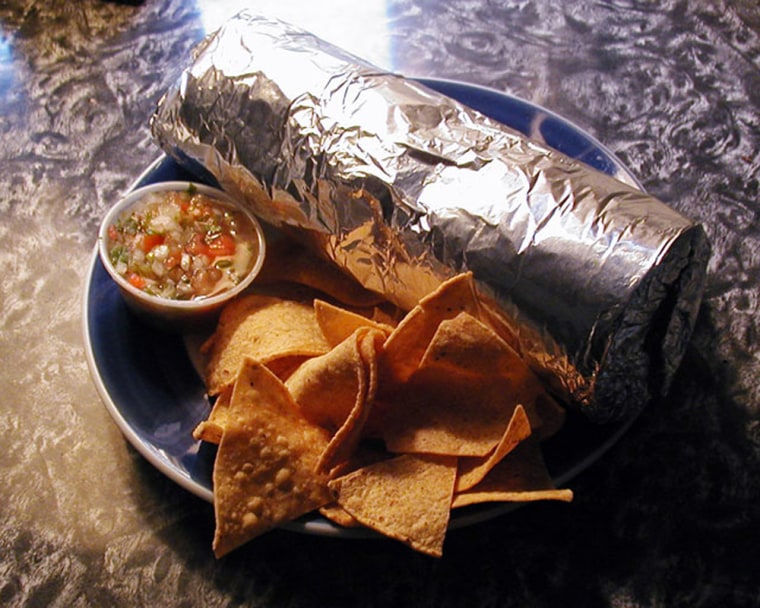
These stuffed tortillas are an exercise in more. More filling, more beans (and what sort?), more rice. Mas queso? Si, señor! Less is not a word that attaches itself to San Francisco's outsized treat.
As with anything in the city by the bay, these foil-wrapped wonders trace their history back to the '60s — though the burrito itself stretches back farther in time. The taqueria known as Le Cumbre, on Valencia, generally claims credit dating back to 1969, though not for the burrito conceptually so much as the size and the food-on-the-go philosophy. Tara Duggan summed it up in the San Francisco Chronicle in 2001: “It wasn't that the burrito was a new thing; it was the style of service that was revolutionary.”
Uber-burritos are an American way of life now, with mini-chains and knockoffs propagating the Mission ethos from sea to sea (often badly). But the next time you tuck into your meal-in-a-wrapper, take a moment to appreciate the Bay Area's role in defining how to eat with nothing more than a wide-stretched hand and a Paul Bunyon-sized appetite.